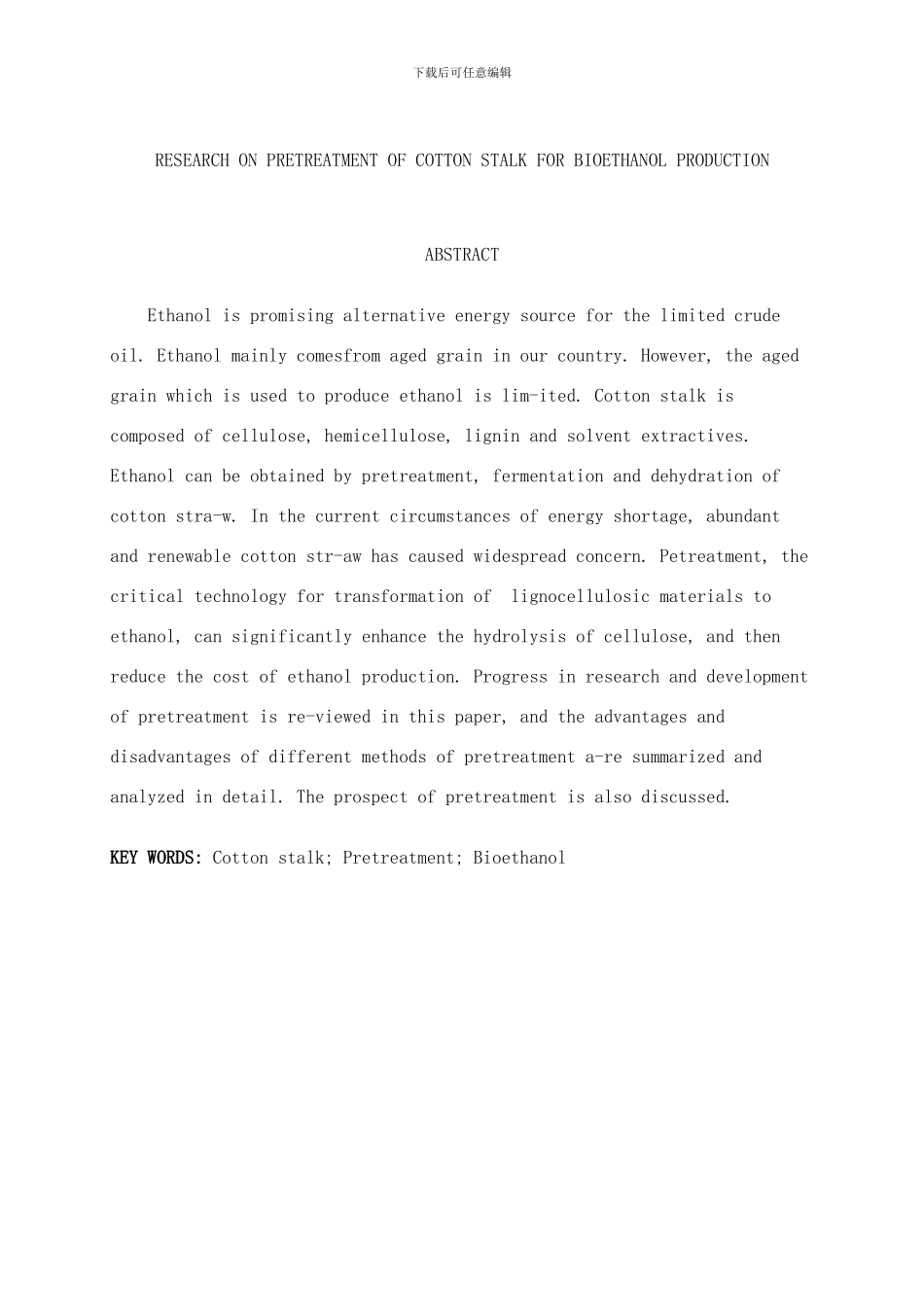下载后可任意编辑棉花秸秆生产燃料乙醇的预处理技术讨论概述摘 要乙醇是一种很有希望替代有限石油的燃料。中国当前燃料乙醇生产的主要原料是陈化粮, 但中国陈化粮可用于燃料乙醇生产的量十分有限。棉花秸秆主要由纤维素、 半纤维素和木质素和其它灰分等组成, 经过预处理、 发酵和脱水可生成燃料乙醇, 在能源急剧短缺的今日, 丰富而又可再生的棉花秸秆已经备受关注。纤维质材料的预处理是转化乙醇过程中的关键步骤, 该步骤的优化可明显提高纤维素的水解率, 进而降低乙醇的生产成本。本文总结了纤维质材料预处理的各种方法, 对各种方法的优缺点进行了综述和分析, 并对生物质预处理技术进展的前景进行了展望。关键词: 棉花秸秆; 预处理; 生物乙醇下载后可任意编辑RESEARCH ON PRETREATMENT OF COTTON STALK FOR BIOETHANOL PRODUCTIONABSTRACTEthanol is promising alternative energy source for the limited crude oil. Ethanol mainly comesfrom aged grain in our country. However, the aged grain which is used to produce ethanol is lim-ited. Cotton stalk is composed of cellulose, hemicellulose, lignin and solvent extractives. Ethanol can be obtained by pretreatment, fermentation and dehydration of cotton stra-w. In the current circumstances of energy shortage, abundant and renewable cotton str-aw has caused widespread concern. Petreatment, the critical technology for transformation of lignocellulosic materials to ethanol, can significantly enhance the hydrolysis of cellulose, and then reduce the cost of ethanol production. Progress in research and development of pretreatment is re-viewed in this paper, and the advantages and disadvantages of different methods of pretreatment a-re summarized and analyzed in detail. The prospect of pretreatment is also discussed.KEY WORDS: Cotton stalk; Pretreatment; Bioethanol下载后可任意编辑第一章 文献综述1.1 前言能源是当今社会赖以生存和进展的基础。当前, 石油等传统化石燃料所造成的环境污染日益严重, 而且其储量逐渐减少。因此, 人们在积极地寻找可...


